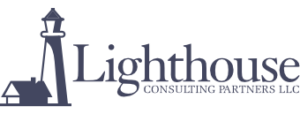Elevating Teams: Developing Empathy and Continuous Growth in Leadership
By Patty Crabtree, CEO Lighthouse Consulting Partners LLC
Building High-Performance Teams Through Empathy and a Growth Mindset
In today’s dynamic workplace, the ability of a team to collaborate, communicate, and navigate challenges effectively can make or break a company’s success. While technical skills and expertise are essential, the intangible qualities of empathy and a growth mindset are increasingly recognized as foundational to building cohesive and resilient teams. The growing demand for team-building workshops—especially among leadership teams—reflects this shift. As leaders and team members deepen their understanding of one another’s work styles, they can more easily foster these essential qualities, creating a powerful framework for high performance.
The Power of Empathy in Team Development
Empathy, the ability to understand and share the feelings of others, is a vital element in building strong teams. When team members can see situations from each other’s perspectives, they can communicate with greater openness and address challenges collaboratively. This foundation of empathy also reduces misunderstandings, enabling teams to resolve conflicts constructively rather than allowing them to simmer under the surface.
Google’s Project Aristotle highlights the value of empathy in fostering psychological safety—a key factor in team effectiveness. Teams with high levels of psychological safety are more likely to innovate and take productive risks, as members feel comfortable being their authentic selves. When empathy is encouraged within a team, individuals are more willing to engage openly, take ownership of their contributions, and support each other’s growth.
Building a Growth Mindset for Lasting Success
The concept of a growth mindset—the belief that abilities and intelligence can be developed through dedication and hard work—fosters resilience and adaptability. In a team setting, a growth mindset enables individuals to view challenges as learning opportunities and to seek feedback as a pathway for improvement. When teams embrace this mindset, they’re more likely to persevere through obstacles and achieve their goals collaboratively.
Leadership teams, in particular, can benefit from a growth mindset as they set the tone for the entire organization. According to the Center for Creative Leadership, teams that cultivate trust and a growth mindset experience a 15% boost in overall performance. Leaders who model growth-oriented behaviors encourage others to do the same, creating an organizational culture where learning and improvement are part of the day-to-day environment.
Increased Demand for Leadership Team Building
In recent months, Lighthouse Consulting Partners has seen a notable increase in requests for team-building workshops designed specifically for leadership teams. This trend reflects an understanding that cohesive and empathic leadership is essential to organizational success. When leaders understand each other’s work styles and approaches, they can communicate more effectively, leverage other’s strengths and present a united front. This cohesion at the leadership level resonates throughout the organization, creating a culture that prioritizes collaboration and empathy at all levels.
A study from Deloitte highlights that 94% of executives and 88% of employees believe that a positive corporate culture is crucial for success. By focusing on the development of their own collaboration and communication skills, leadership teams set a powerful example for their entire organization.
Practical Steps to Develop Empathy and a Growth Mindset in Teams
- Foster Open Communication: Open communication is the cornerstone of empathy. Team-building workshops help teams create environments where members feel comfortable sharing their perspectives and listening actively to others. These workshops help establish an empathy that encourages team members to engage in honest, productive discussions that lead to stronger relationships and mutual understanding.
- Encourage Reflective Listening: Teams often miss the full value of each member’s contributions due to misunderstandings or lack of active listening. Reflective listening techniques help team members paraphrase and confirm each other’s ideas, reducing misinterpretations and demonstrating empathy. In high-functioning teams, reflective listening becomes a natural part of the communication process, strengthening relationships and minimizing conflict.
- Focus on Strengths, Not Weaknesses: Embracing a growth mindset means focusing on potential rather than shortcomings. When team members identify the unique strengths and contributions of each member, these can be utilized to enhance discussions and outcomes. As team members recognize and value each other’s strengths, they become more supportive and solution-focused which is critical to creating a collaborative team environment.
- Develop Conflict Resolution Skills: When handled constructively, conflict can be a powerful driver of growth and innovation. The focus on a growth mindset helps team members view conflicts as opportunities for learning rather than obstacles to avoid. According to the Harvard Business Review, companies that foster open communication and constructive conflict experience 30% fewer conflicts within teams. By learning to approach conflicts with curiosity and respect, team members can turn potential friction into productive conversations that enhance collaboration.
- Model and Reinforce Empathy and Growth Mindset from Leadership: Leadership teams that embrace these qualities set a powerful example. When leaders approach challenges with empathy and model a growth mindset, they reinforce these values across the organization. A quote from Patrick Lencioni underscores the importance of these qualities: “Not finance, not strategy, not technology. It is teamwork that remains the ultimate competitive advantage, both because it is so powerful and so rare.” By developing empathy and a growth mindset in leadership, organizations unlock this advantage.
A Path Forward: Commitment and Accountability
A focus on team development is an ongoing process and not a one-time fix but a catalyst for lasting transformation. An effective workshop establishes shared commitments within the team that guide how they will work together moving forward both from the individual contribution to the group goals. Leaders become accountable to hold periodic follow-up meetings to ensure accountability and reinforce the team’s growth.
Gallup research found that highly engaged teams—those that understand and value diverse perspectives—achieve 21% greater profitability and 17% higher productivity. When team members are committed to fostering empathy and a growth mindset, they bring out the best in each other and collectively work toward achieving their goals.
Building a Future of Collaboration and Success
Today’s business landscape demands teams that are adaptable, resilient, and collaborative. By fostering empathy and a growth mindset, organizations equip their teams to meet these demands effectively. Investing in leadership team-building creates a ripple effect throughout the company, as leaders set the tone for a culture of support, understanding, and continuous growth.
At Lighthouse Consulting Partners, our team-building workshops help organizations unlock this potential, developing that empathy and growth mindset necessary to drive results. As more companies recognize the value of team development, these efforts will lead to a future where high-performing, collaborative teams create lasting success.
Lighthouse Consulting Partners, LLC Divisions
Testing Division provides a variety of services, including in-depth work style & personality assessments for new hires, staff development and team building. LCP can provide these assessments in 19 different languages along with offering skills testing, leadership and management coaching and offer a variety of workshops – team building, communication.
Business Consulting for Higher Productivity Division provides stress & time management workshops, sales & customer service training and negotiation skills, leadership training, staff planning, operations, refining a remote work force and much more.
To order our books, “Cracking the Personality Code”, “Cracking the Business Code” and “Cracking the High-Performance Team Code”, please go to www.lighthouseconsulting.com.
Permission is needed from Lighthouse Consulting Partners, LLC to reproduce any portion provided in this article. © 2024


 Four: Envisioning Future Needs. To reach the organizational goals and complete the projects identified in step one, what skills, competencies, and staffing will be required? It is best to complete this step with the mindset of building the staff from scratch. This will help identify requirements without being overly influenced by the current state. Will the goals and projects require new competencies? Will additional staff be needed? Will staffing need to change during the year? Would using contractors or outside expertise be a good fit to meet short term needs?
Four: Envisioning Future Needs. To reach the organizational goals and complete the projects identified in step one, what skills, competencies, and staffing will be required? It is best to complete this step with the mindset of building the staff from scratch. This will help identify requirements without being overly influenced by the current state. Will the goals and projects require new competencies? Will additional staff be needed? Will staffing need to change during the year? Would using contractors or outside expertise be a good fit to meet short term needs?
















 Culture reflects what is greatest, genuine, and noble about the company. It is the key behaviors an organization expects as the team works together and with its clients and vendors.
Culture reflects what is greatest, genuine, and noble about the company. It is the key behaviors an organization expects as the team works together and with its clients and vendors. Then, they took it one step further. Each value was clearly defined to communicate what it meant to the organization. Definition statements were created for each value to describe its intent. These enhanced values were shared with staff and communicated on a regular basis. Leadership reinforced them in their daily interactions.
Then, they took it one step further. Each value was clearly defined to communicate what it meant to the organization. Definition statements were created for each value to describe its intent. These enhanced values were shared with staff and communicated on a regular basis. Leadership reinforced them in their daily interactions. If your company is being outperformed in the marketplace, you experience high turnover in key positions, financial performance is declining, or just want to move from good to great, often these issues are a result of an unhealthy culture.
If your company is being outperformed in the marketplace, you experience high turnover in key positions, financial performance is declining, or just want to move from good to great, often these issues are a result of an unhealthy culture.
 siblings, pets, or a close group of friends. They probably sacrifice for them and spend most of their free time with them.
siblings, pets, or a close group of friends. They probably sacrifice for them and spend most of their free time with them. An “I’m sorry” gift doesn’t necessarily have to cost a lot; it depends on how big the mistake was.
An “I’m sorry” gift doesn’t necessarily have to cost a lot; it depends on how big the mistake was.

